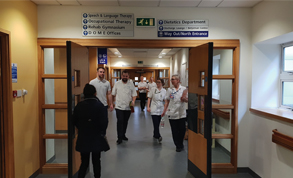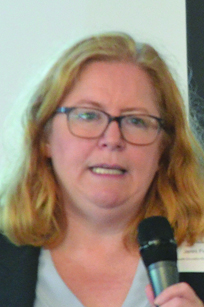Plans remain in place for training tariff reform
Prior to 2013, funding for NHS providers to cover the costs of training was based on historical self-declared costs, with support ranging from £10,000 to £90,000 for an undergraduate doctor’s placement. A new tariff system aimed to put funding on a more equitable basis and provide a mechanism for allowing funding to follow students.
This was important as research in 2013 showed that 48% of UK trained doctors undertook specialty training in the same region as their medical school, leaving some parts of the country with greater problems filling positions. (This is now being addressed by prioritising under-doctored areas as part of the expansion of medical school places by 1,500.)
There are currently three core tariffs covering non-medical placements (nurses, midwives and allied health professions), medical undergraduate placements and medical postgraduate training. The non-medical and undergraduate placements attract a straightforward placement fee, while postgraduate training is a mix of placement fee and salary support.
The tariff system was suspended for the first four months of the financial year in response to the Covid outbreak. Block contracts based on one-third of last year’s payments mirrored the simplified arrangements for service funding.
However, plans remain to expand the currencies used within this payment system. A consultation paper in 2018 proposed a currency based on new education resource groups. Under the proposals, the non-salaried placements (non-medical and undergraduate medical) would be broken into 48 groupings, one for each profession. This would include separate ERGs for undergraduate medical, adult nursing, learning disability nursing, midwifery, paramedics, physiotherapy and dietetics, for example.
For postgraduate medical and dental trainees, 81 groupings would have been adopted, with a further 48 used for other salaried professions.
‘The response to the consultation was that the approach for the salaried medical and dental trainees may have been overly complex. That’s something we will review,’ says Jennifer Field (pictured), HEE deputy director for finance strategy.
Plans to launch the new currency (as a precursor to attaching prices) in 2019/20 were put on hold. This was to allow progress with connected workstreams, setting up a student data collection and introducing a standardised education and training contract, which will be used in all contracts from April next year.
As part of the data collection, higher education institutes submit their total number of students and placement plans, which is then quality assured by the placement provider.
‘We are getting better data,’ says Ms Field. ‘One of the issues we had with costing education was that providers didn’t always know how many students they had on placement with them. This gives them that information. And this will feed into the contract schedules.’
Better data will support improved commissioning of training and inform the service’s response to the NHS people plan.
But Covid has also further delayed currency development. The focus for HEE this year has been supporting financial stability – hence the block contracts. And while student placements stopped during the first wave, HEE also facilitated early moves for those close to finishing their studies into paid roles supporting the response. As part of the second wave, the aim is to keep placements running – missing two to three months of placements is a major hole in trainees’ experience. However, decisions are being informed by local context and pressures.
The plan remains to attach prices to new currencies once they are adopted. There have been a number of education and training cost returns to support the setting of tariff prices. The last exercise covered the 2016/17 financial year, since when education costing submissions have been stood down to enable costing practitioners to focus on patient-level costing.
That exercise implied an underfunding of placements of around £700m, although it was not across the board. In fact, undergraduate medical training was over-funded compared with reported costs.
This has not led to a rebalancing of funding from service tariffs to education tariffs – difficult at the best of times, but particularly when many providers are running deficits. And there are concerns about the accuracy of the data, with a lot of subjectivity involved in the costing of training. For example, providers have to estimate how to split the time spent by postgraduate trainees between service duties and training.
But the data provides relativities between the costs of different training activities. HEE has already used this information. Undergraduate medical placements received no inflationary increase in 2020/21, with HEE’s growth used to boost non-medical placement tariffs by £458 and medical postgraduate by £285.
HEE, which is now leading the way in tariff development, on top of its existing role to produce a currency, is keen to make further progress in the short to medium term.
‘Towards April 2022, I would hope we would be seeing changes,’ says Ms Field. ‘It may still be a simplified tariff – we need to let the work play out – but there will be a stepping stone that moves us from the three tariffs to a tariff based on the full new currency.’
Transition from the 2013 changes, cushioning providers from rapid swings in training income, is now nearly complete, with 99% of providers within £1m of their target income under the three tariffs and just £6.3m now needing to be redistributed.
Further changes to tariffs may need another transition. But a more granular funding system, which enables funds to follow trainees and more closely reflects providers’ training-related costs, is getting closer.
Related content
We are excited to bring you a fun packed Eastern Branch Conference in 2025 over three days.
This event is for those that will benefit from an overview of costing in the NHS or those new to costing and will cover why we cost and the processes.